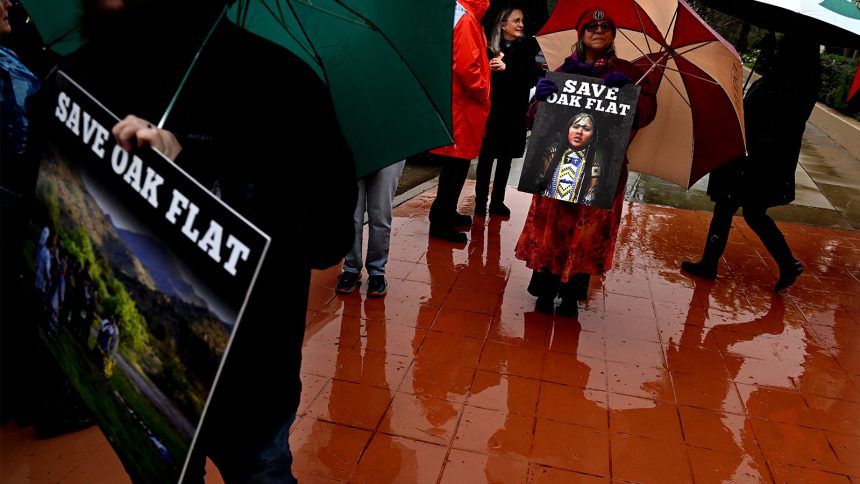The Ninth Circuit Court of Appeals recently made a controversial decision regarding the construction of a copper mine in Arizona on sacred land belonging to the San Carlos Apache Tribe and other Indigenous nations. The mine, situated at Chí’chil Biłdagoteel, more commonly known as Oak Flat, holds one of the largest copper deposits globally and plays a crucial role in green energy projects. Despite opposition from groups like Apache Stronghold, who view Oak Flat as a sacred site essential for their faith and cultural traditions, the project by Resolution Copper backed by mining giants Rio Tinto and BHP is set to proceed. This venture would result in a massive crater nearly 1,000 feet deep and 2 miles wide.
The significance of Oak Flat is deeply rooted in history. Despite efforts to protect it, including being listed on the National Register of Historic Places, the land faces imminent destruction. The legal battle between Indigenous rights, religious freedom, and environmental concerns is at the forefront of this issue. For tribes like the San Carlos Apache, whose religious practices are deeply intertwined with the land, preserving these sacred sites is crucial for cultural continuity and passing down traditions to future generations.
On the other hand, proponents of the mine argue that it would bring economic benefits, creating jobs, injecting millions into the local economy, and meeting the growing demand for copper in green technologies. The clash between the project’s economic advantages and its impact on Indigenous communities underscores a complex debate about balancing progress with cultural preservation.
The legal dispute centers on the concept of “substantial burden” on religious practices, requiring strong justification for government interference. While the Ninth Circuit’s ruling favored the mine developers, groups like Apache Stronghold continue to fight for their rights under laws like the Religious Freedom Restoration Act (RFRA). By invoking RFRA, they seek to broaden protections for religious practices and challenge the government’s authority over sacred lands.
If the case reaches the Supreme Court, it could set a precedent for how religious freedoms are upheld in land-use disputes. The outcome may have far-reaching implications for Indigenous communities and their ability to protect sacred sites in the face of economic interests.
As this legal battle unfolds, it raises important questions about the intersection of religious freedom, environmental conservation, and economic development. The fate of Oak Flat not only symbolizes a clash of values but also underscores the ongoing struggle for Indigenous rights and cultural preservation in modern society.
A spokesperson for the U.S. Forest Service, the agency targeted in the lawsuit, declined to comment, citing the ongoing legal proceedings surrounding the case.






